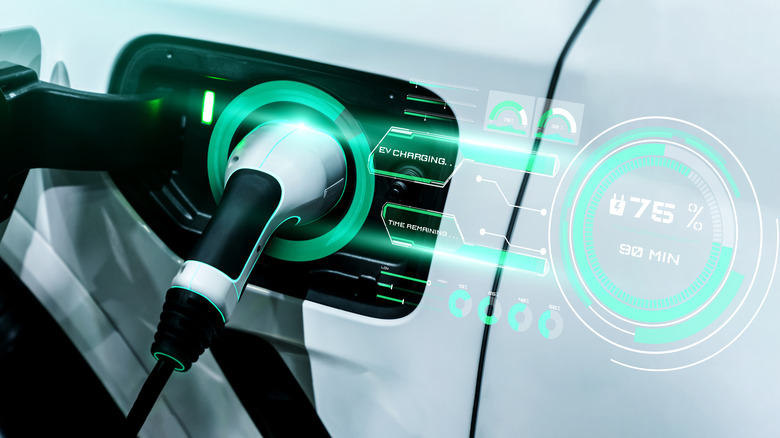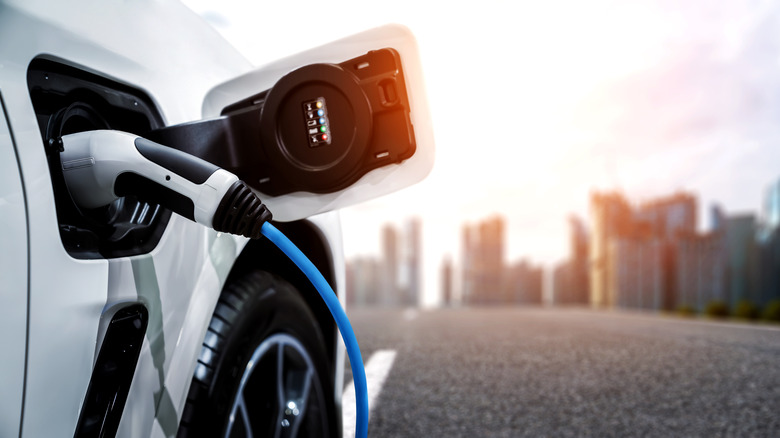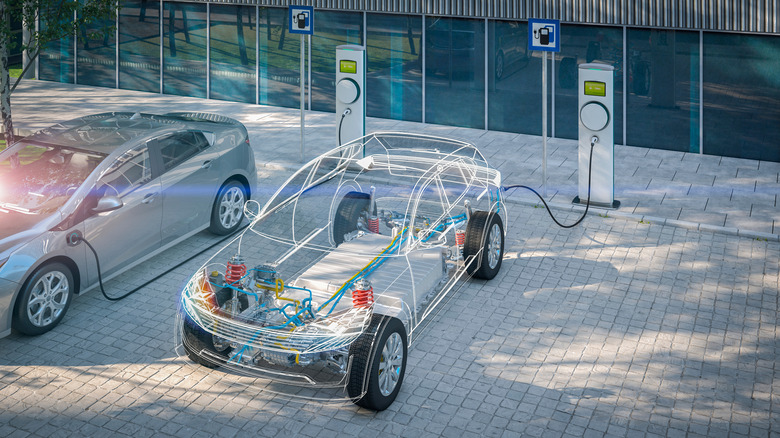What's Going To Happen To The Millions Of Electric Car Batteries After Their Lifespans End?
While driving electric vehicles is a step towards a greener future, the car batteries that power them are not as sustainable. Though the battery is at the heart of any EV, most are made from lithium-ion and have a limited lifespan that starts to degrade from the first time you charge them. So what happens when they reach capacity?
The cycle of charging and discharging causes them lose energy and power. The more charge cycles a battery goes through, the faster it will degrade. Once batteries reach 70 or 80% of their capacity, which happens around either 5 to 8 years or after 100,000 miles of driving, they have to be replaced, according to Science Direct.
Due to electric vehicles' rising popularity, it goes without saying that their battery waste will become a major issue. Experts estimate that 12 million tons of batteries will be thrown away by 2030, The Guardian reported. The conundrum that manufacturers and consumers have is that although they can be recycled, there are not enough facilities to handle them. To date, there are only four lithium-ion recycling centers in the United States (via WCNC). However, this number must grow exponentially in the next few years as Industry experts predict there will be 85 million electric vehicles on the road by 2030 (via Science Direct).
Recycling is complex
Recycling car batteries is an arduous and dangerous process that involves splitting them apart to extract the metals inside. To do it, recyclers typically utilize two techniques: pyrometallurgy and hydrometallurgy, Science reported. Pyrometallurgy, the preferred method, shreds the battery down and then a burning process takes the metal out. With hydrometallurgy, the battery is submerged in acid to separate the metal. With either method, there is a risk of toxic fume emissions or an outright explosion (via Science).
There are other issues too. Unlike other compact batteries, EV batteries weigh about 960 pounds, according to Wired. If you are an EV manufacturer, finding proper transportation and storage could prove a logistical nightmare. They are also a fire hazard if and when stored together. A report by the Environmental Protection Agency found that between 2013 and 2020, more than 240 lithium-ion battery fires broke out across 64 municipal waste facilities.
And that's not all. If these batteries find their way to landfills, harmful toxins such as lead and nickel can contaminate soil and groundwater supplies (via AZO Clean Tech).
Companies are Giving EV Batteries a Second-Life
Outside of recycling, old EV batteries can be repurposed as a renewable energy source for homes and businesses. Even if they have a reduced storage capacity, they can be reused to store wind and solar energy, according to Innovative News Network. This can extend their life cycle by another seven to 10 years.
A good example of this is Toyota's initiative to sustainably power Yellowstone Park. The car company equipped the landmark with solar panels powered by batteries that once belonged in Camry Hybrids, replacing diesel generators.
Toyota was not the only one, however. A Spanish company ran an experiment where it converted used lithium-ion batteries into second-life batteries with great success. In particular, it proved the ability to use recycled electric vehicle batteries to help power one of the local electricity plants in the case that there is a temporary shutdown (via Enel).


